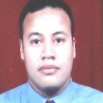International Journal of Intelligent Systems and Applications (IJISA)
IJISA Vol. 4, No. 5, 8 May 2012
Cover page and Table of Contents: PDF (size: 587KB)
Radiation Damage Effects in Heterostructure Light Emitting Diodes (HLEDs) under Proton Irradiation Fields
Full Text (PDF, 587KB), PP.45-55
Views: 0 Downloads: 0
Author(s)
Index Terms
Light Emitting Diodes (LEDs), Optoelectronic devices, Radiation damage, Optical functional device, Radiation efficiency
Abstract
In the present paper, we have been analyzed the high temperature variations testing in order to be used to determine light emitting diode lifetime, even though laser diode failure mechanisms are more sensitive to increases in current density. As a measured parameter of degradation, the current density is of great significance when searching for failure modes in a laser diode. Raising the current density however, is not really indicative of lifetime since it is more likely a situation to be avoided than one that simulates normal lifetime degradation. The reliability of semiconductor sources is very dependent on the degradation modes. This paper has investigated some of the degradation modes and capabilities of typical LEDs currently used in many communication and sensing systems over wide range of the affecting parameters. LED’s are typically used in multimode transmission systems where data rates no larger than 50 Mbit/sec are required. They have larger spectral widths and can add to the problem of dispersion in communications systems. Laser diodes are used in systems that require coherent and often single mode light such as high data rate communications and sensing applications.
Cite This Paper
Ahmed Nabih Zaki Rashed, "Radiation Damage Effects in Heterostructure Light Emitting Diodes (HLEDs) under Proton Irradiation Fields", International Journal of Intelligent Systems and Applications(IJISA), vol.4, no.5, pp.45-55, 2012. DOI:10.5815/ijisa.2012.05.07
Reference
[1]S. M. Khanna, D. Estan, L. S. Erhardt, A. Houdayer, C. Carlone, A. Ionascut-Nedelcescu, S. R. Messenger, R. J. Walters, G. P. Summers, J. H. Warner, and I. Jun, “Proton energy dependence of the light output in gallium nitride light emitting diodes,” IEEE Trans. Nucl. Sci., vol. 51, pp. 2729–2735, Oct. 2004.
[2]A. Kalavagunta, M. Neifeld, H. Barnby, and R. Schrimpf, “Impact of proton irradiation on a grating demultiplexer,” IEEE Trans. Nucl. Sci, vol. 51, pp. 3595–3602, Dec. 2004.
[3]J. H. Warner, R. J. Walters, S. R. Messenger, G. P. Summers, S. M. Khanna, D. Estan, L. S. Erhardt, and A. Houdayer, “High energy proton irradiation effects in GaAs devices,” IEEE Trans. Nucl. Sci., vol. 51, pp. 2887–2895, Oct. 2004.
[4]A. H. Johnston and T. F. Miyahira, “Energy dependence of proton damage in optical emitters,” IEEE Trans. Nucl. Sci., vol. 49, pp. 1426–1431, June 2002.
[5]J. Stohs et al., “Gain, refractive index change, and linewidth enhancement factor in broad-area GaAs and InGaAs quantum-well lasers,” IEEE J. Quantum Electron., vol. 37, pp. 1449–1459, Nov. 2001.
[6]T. F. Miyahira and A. H. Johnston, “Trends in optocoupler degradation,” IEEE Trans. Nucl. Sci., vol. 49, pp. 2868–2873, Dec. 2002.
[7]A. H. Johnston and B. G. Rax, “Proton damage in linear and digital optocouplers,” IEEE Trans. Nucl. Sci., vol. 47, pp. 675–681, June 2000.
[8]L. A. Coldren, “Monolithic tunable diode lasers,” IEEE J. Select. Topics Quantum Electron., vol. 6, pp. 988–999, Dec. 2000.
[9]E. Ollier, “Optical MEMS devices based on moving waveguides,” IEEE J. Select. Topics Quantum Electron., vol. 8, pp. 155–162, Jan. 2002.
[10]A. Johnston, “Radiation effects in light-emitting and laser diodes,” IEEE Trans. Nucl. Sci., Vol. 50, No. 3, pp.689-703, June 2003.
[11]K. Gill, R. Grabit, J. Troska, and F. Vasey. “Radiation hardness qualification of InGaAsP/InP 1310nm lasers for the CMS Tracker Optical Links,” IEEE Trans. Nucl. Sci., Vol. 49, No. 6, pp.2923-2929, December 2002.
[12]R. J.Walters, G. P. Summers, S. R. Messenger, A. Freundlich, C. Monier, and F. Newman, “Radiation hard multi-quantum well InP/InAsP solar cells for space applications,” Prog. Photovolt., vol. 8, pp. 349–352, 2000.
[13]P. G. Goetz, W. S. Rabinovich, R. J. Walters, S. R. Messenger, G. C. Gilbreath, R. Mohn, M. Ferraro, K. Ikossi, and D. S. Katzer, “Effects of proton irradiation on InGaAs/AlGaAs multiple quantum well modulators,” in Proc. IEEE Aerospace Conf., Big Sky, MT, Mar. 2000.
[14]S. M. Khanna, H. C. Liu, P. H. Wilson, L. Li, and M. Buchanon, “High energy proton and alpha radiation effects on GaAs/AlGaAs quantum well infrared photodetectors,” IEEE Trans. Nucl. Sci., vol. 43, pp. 3012–3018, Dec. 1996.
[15]S. M. Khanna, D. Estan, H. C. Liu, M. Gao, M. Buchanon, and A. J. Springthorpe, “1–15 MeV proton and alpha radiation effects on GaAs quantum well light emitting diodes,” IEEE Trans. Nucl. Sci., vol. 47, pp. 2508–2514, Dec. 2000.
[16]S. R. Messenger, R. J. Walters, E. A. Burke, G. P. Summers, and M. A. Xapsos, “NIEL and damage correlations for high energy protons in gallium arsenide devices,” IEEE Trans. Nucl. Sci., vol. 48, Dec. 2001.
[17]S. R. Messenger, E. A. Burke, M. A. Xapsos, G. P. Summers, R. J.Walters, I. Jun, and T. M. Jordan, “NIEL for heavy ions: An analytical approach,” IEEE Trans. Nucl. Sci., vol. 50, pp. 1919–1923, 2003.
[18]I. Jun, M. A. Xapsos, S. R. Messenger, E. A. Burke, R. J. Walters, G. P. Summers, and T. Jordan, “Proton nonionizing energy loss (NIEL) for device applications,” IEEE Trans. Nucl. Sci., vol. 50, pp. 1924–1928, 2003.
[19]Sh.M. Eladl, “Modeling of photons trapping effect on the performance of HPT-LED Optoelectronic Integrated Device (OEID),” Semiconductor Physics, Quantum Electronics & Optoelectronics Journal, Vol. 12, No. 3, pp. 255-259, 2009.
[20]M. V. Raghavendra, and P. L. H. Vara Prasad, “Estimation of Optical Link Length for Multi Haul Applications,” International Journal of Engineering Science and Technology, Vol. 2, No. 6, pp. 1485-1491, 2010.
[21]A. H. Johnston, B. G. Rax, L. E. Selva, and C. E. Barnes, “Proton degradation of light-emitting diodes,” IEEE Trans. Nucl. Sci., vol. 46, pp. 1781–1789, Dec. 1999.
